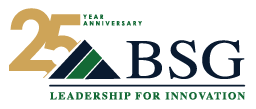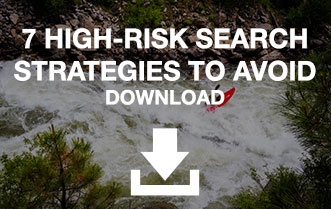Clark explores whether you should (and/or shouldn't) trust your instincts when hiring...
How hard can it be to interview and assess a candidate’s fit for a particular need or position? We get asked this a lot.
Well…. Here’s the thing…. While all of us can interview candidates and make a determination on whether they seem like a good fit for the role, the real question is, can we TRUST our judgement?
To answer this question, we can look to the luminaries in the industry of behavioral psychology who have spent their careers proving our human instincts and biases and disproving conventional beliefs. 3 thought leadership references jump to mind here.
- In Thinking Fast & Slow, Dr. Daniel Kahneman, offers a recapitulation of decades of research that led to his winning the Nobel Prize for his breakthroughs in both human psychology and behavior economics. In his book, Dr. Kahneman shares the discoveries that led to his Nobel, and the science behind a better understanding of how decisions are made, why certain judgement errors are so common and what we can do to improve how we go about making decisions to obtain a higher accuracy. One of the areas Dr. Kahneman uses as a prime example of his discoveries into human cognition is the task of assessing candidates & making hiring decisions.
- In Malcolm Gladwell’s best seller, Blink, many examples are given of our penchant for snap decision-making, and actions taken in a blink of the eye on intuition rather than facts or logic. One infamous example Gladwell provides us on the risk of poor candidate assessment was when U.S. citizens “hired” their 29th new president, Warren Harding at the end of World War I, largely because he “looked presidential.” In truth, he had no real skills or merits for the role other than his appearance, and he has become widely regarded as one of the worst U.S. presidents in our history.
- The third piece of research is chronicled in the book, The Invisible Gorilla, based on a famous experiment performed by then Harvard professor of Psychology Daniel Simons. One of my colleagues, Dr. Dan Squires, wrote a brilliant post on this topic titled “The Shrinking Moon & Invisible Gorillas.” https://www.bostonsearchgroup.com/blog/the-shrinking-moon-invisible-gorillas-dr-dans-weekly-wag. Not only did Dr. Dan unpack the key take away from this book—human observation can’t be trusted as an infallible recording of the world and events that unfold—he actually used the post itself to prove it. Absolutely worth a read. We believe we see more than we do, and that we’re more attentive than we actually are. To test your own attention acuity, you can challenge yourself with the Youtube video of the exercise at https://www.youtube.com/watch?v=IGQmdoK_ZfY
So where does that leave us now, after citing a Nobel prize winner, a global best-selling author, and a Harvard University psychology research experiment that was dubbed as "one of the most famous psychological demos ever”? The key take-away learning from all of this includes the 4 following best practices:
- Because of Darwinian selection, human DNA is still programmed to make decisions fast. When it comes to assessing danger, this indeed is and remains important. But when we are presented with circumstances that demand more reasoned judgement—like candidate interviewing—we should slow down and not jump to conclusions or assessment outcomes.
- Specifically, assessing candidates being considered during a search, we should resist “first impressions” and instead deploy an assessment based on well-defined interviewing protocols that can generate repeatable and sustainable improvements in candidate selection. The behavior-based interviewing technique is a gold standard in the industry. You can find out more from the Society of Human Resources and their downloadable pdf guide at https://www.shrm.org/LearningAndCareer/learning/Documents/Behavioral%20Interviewing%20Guide%20for%20Early%20Career%20Candidates.pdf. Also the book, “Who” by Randy Street and Jeff Smart is a terrific DIY bible on proven hiring techniques. https://www.amazon.com/Who-Geoff-Smart/dp/0345504194
- Use assessment instruments that are credentialed and validated to help with objectivity and avoid selection bias, as well as to uncover potential areas to explore and probe further with candidates that are not visible via traditional interviewing techniques. For more, see our Performance Sequencing EngineTM toolbox at talentsequencing.com
- As interviewers, we should try to find a way to be able to “review” the information gathered, preferably via video of a candidate interview, or very detailed and structured note-taking during such interviews to better capture candidate qualifications more accurately and prevent decision bias and revisionist history.
Standing on the shoulders of this research and its findings, these 4 interviewing and assessment best practices should allow us all to improve the odds in hiring success, and reduce both false positive and false negatives.




